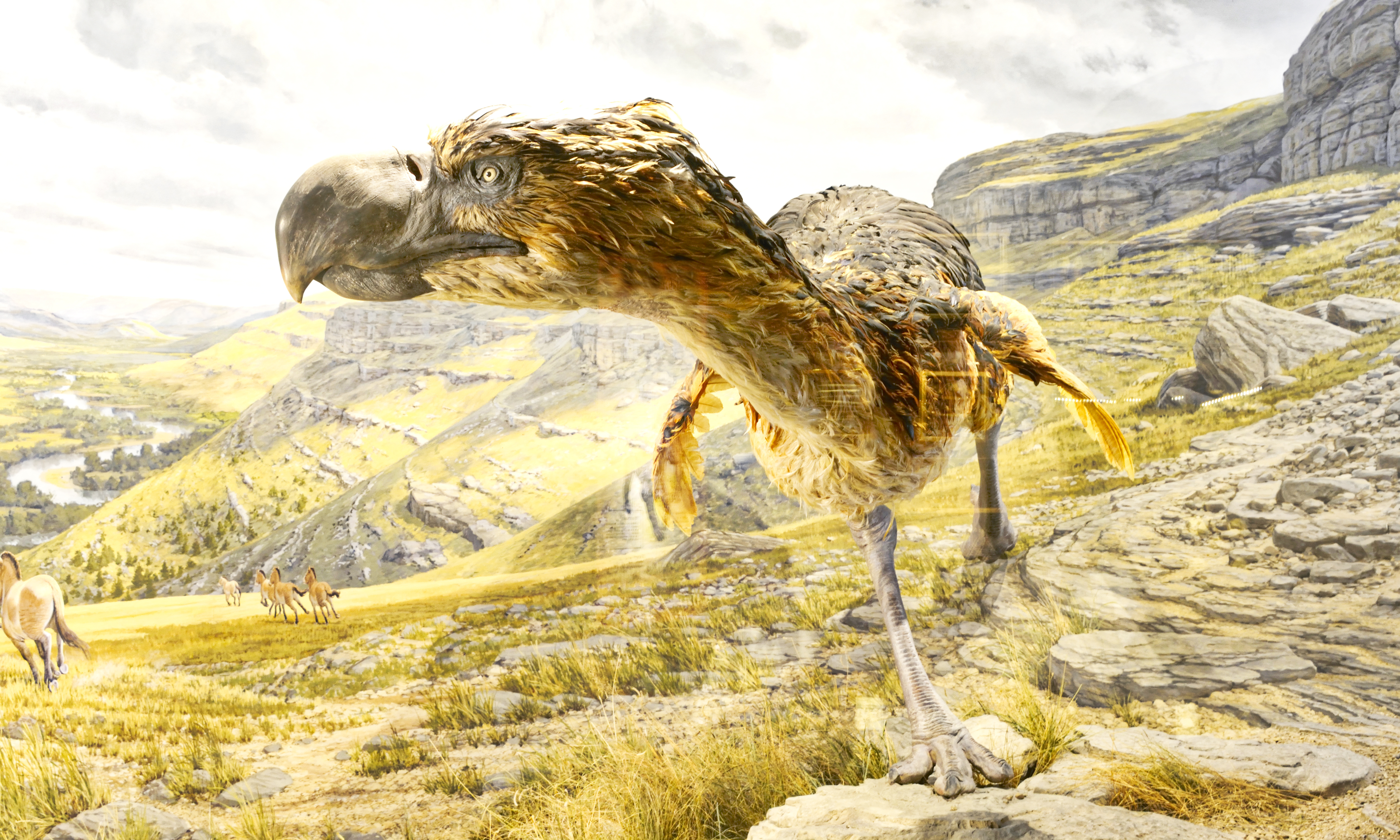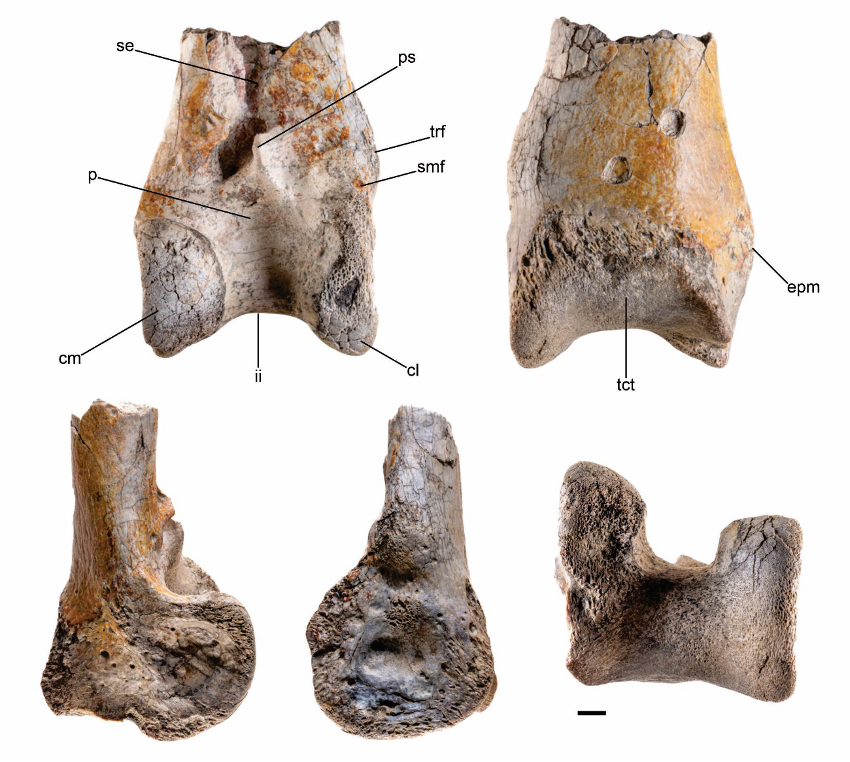
Nearly 12 million years ago, the largest "terror bird" ever discovered was attacked and killed by a massive caiman, a 3D analysis of its fossilized leg suggests.
Researchers described the fossil, which was found at the La Venta formation in the Tatacoa Desert of Colombia, in a study published Monday (Nov. 4) in the journal Papers in Palaeontology.
The fossil is the first known specimen from a Phorusrhacid, a family of large, predatory flightless birds colloquially known as "terror birds," found in Colombia. The size of the bone, a part of the leg equivalent to a shin bone in humans, suggests that the bird may have been between 5% and 20% bigger than other terror bird specimens previously found, possibly weighing around 340 pounds (156 kilograms) and standing over 9 feet (2.7 meters) tall.
Even with its large stature, the meat-eating bird was likely preyed upon by an even more giant creature— a caiman from the genus Purussaurus, a crocodilian thought to be over 30 feet (9 m) long. To piece together the final moments of the creature, the researchers used a portable scanner, which revealed the deep puncture wounds the caiman left behind.
"We suspect that the terror bird would have died as a result of its injuries given the size of crocodilians 12 million years ago," study co-author Siobhán Cooke, an associate professor of functional anatomy and evolution at the Johns Hopkins University School of Medicine, said in a statement.
Related: Monster bird fossils unearthed in Antarctica
Wielding a massive head with a sharp, ax-like beak, terror birds may have hunted smaller animals by driving the point of their beak into their prey with strong neck muscles.
The find also provides a new understanding of the entire ecology of the La Venta area during the Miocene epoch (23 million to 5 million years ago).

Most other terror bird fossils have been found in Patagonia, a more temperate environment at the time. But this terror bird, found in Colombia, would have been an apex predator in a tropical environment. The landscape of La Venta was lush with "meandering rivers," the statement noted, and would have been rich with diverse species. The bird would have shared the land with primates, hoofed mammals, giant ground sloths and ancient relatives of armadillos known as glyptodonts.
"During this time we witnessed the development of large forms (much larger than those alive today) in certain groups of animals — crocodiles, snakes, some bird groups — in La Venta and elsewhere in South America," Luis Chiappe, the senior ice president of research and collections for the National History Museum of Los Angeles County who was not involved with the study, told Live Science in an email.
The fossil was initially found nearly 20 years ago, but wasn't initially pegged as belonging to a terror bird. Modern scanning and diagnostic technology allowed for the fossil to be re-examined and identified. "It's possible there are fossils in existing collections that haven't been recognized yet as terror birds because the bones are less diagnostic than the lower leg bone we found," Cooke said.







